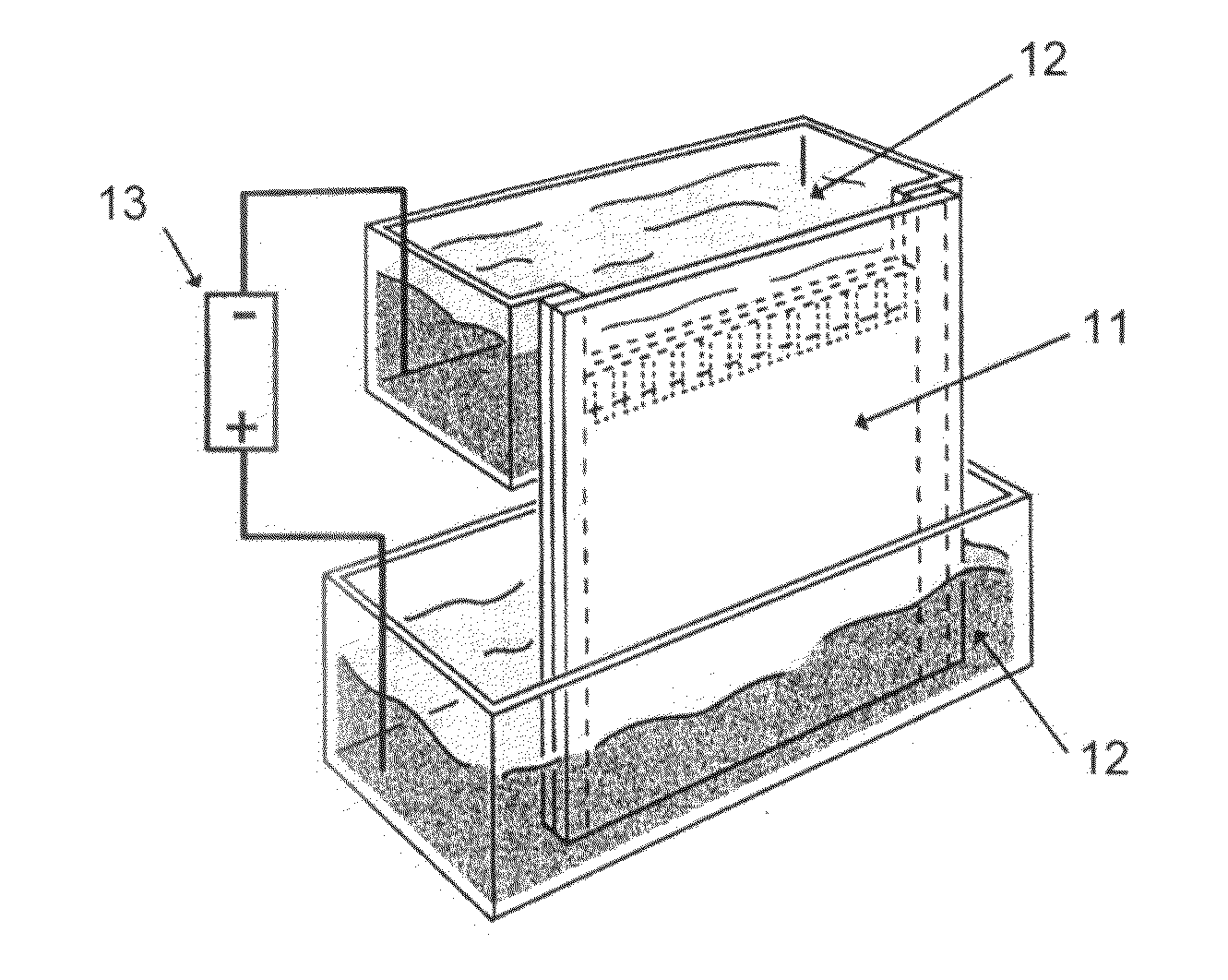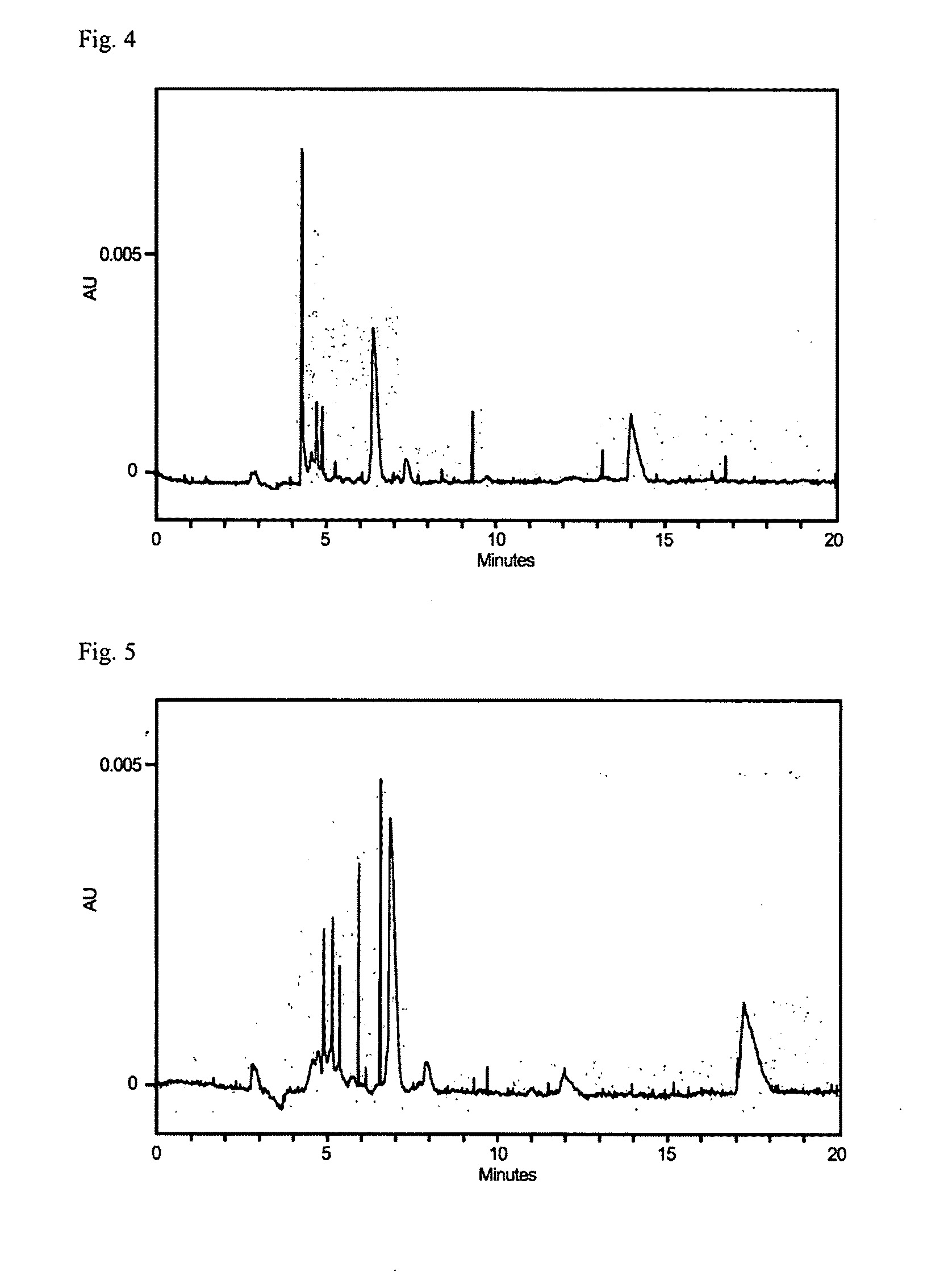Separation Medium for Biochemical Analysis
a biochemical analysis and separation medium technology, applied in the field of separation medium, can solve the problems of difficult selection of separation medium, short life span of capillaries, and decreased resolution of separation medium, and achieve the effects of high theoretical plate number, easy replacement of separation medium, and high reproducibility
- Summary
- Abstract
- Description
- Claims
- Application Information
AI Technical Summary
Benefits of technology
Problems solved by technology
Method used
Image
Examples
example 1
(1) Packing of Capillary with Self-Assemblable Hydrogel
[0161]First, in a glass vessel, 1, 20-3′-thymidylic acid bolaamphiphile of the following formula:
[0162]which is a self-assemblable amphiphilic compound (see R. Iwaura et al. Chem. Mater., 2002, 14, 3047, and JP-A No. 2003-55642) (10 mg, 0.01 millimoles, or 5 mg, 0.005 millimoles) was measured, and to this, 0.5 mL of TE buffer (Wako Pure Chemical Industries, Ltd., product No. 316-90025) at pH 8 was added. The mixture was dissolved while heating with a heat gun to prepare solutions containing 2% by weight and 0.5% by weight of the amphiphilic compound. These solutions were filtered through a 0.45 micron membrane filter (Gelman Science Japan, Ltd., product No. 4457).
[0163]Next, the above-described solution containing the amphiphilic compound at a temperature of 40 to 60° C. was set into a capillary electrophoresis apparatus (Beckman Coulter, Inc., P / ACE System MDQ), and by pressurizing at 10 psi for 3 minutes, the solution was pack...
example 2
[0172]4.958 mL of sterilized water was added to ethanediyl-1,2-bis(hexadecyldimethylammonium bromide) (compound 35, (see I. Huc et al., Angew. Chem., Int. Ed. 1998, 37, 2689-2691 for the synthesis) (19.94 mg, 0.0352 mmol), which is a self-assemblable compound, and an equivalent of L-tartaric acid (6.82 mg, 0.0351 mmol)), and the mixture was dissolved under heating, to condition a hot aqueous 0.4 wt % solution of compound 35 mL-tartaric acid salt.
[0173]Next, a solution was obtained by dissolving 1.5 mL of 40% acrylamide / bis solution (BIORAD, Inc., product No. 161-0146), 3.9 mL of 0.5×TBE buffer solution (50-fold dilution of 10×TBE of BIORAD, Inc., product No. 161-0733), 9.375 mL of sterilized water, and 0.1 g of ammonium persulfate (Wako Pure Chemical Industries, Ltd., product No. 018-03282) dissolved in 1 mL of sterilized water, and 0.075 mL of this solution was mixed into a gel solution. To this gel solution, 0.15 mL of the hot aqueous solution formed of the above-described L-tarta...
PUM
| Property | Measurement | Unit |
|---|---|---|
| temperature | aaaaa | aaaaa |
| internal diameter | aaaaa | aaaaa |
| length | aaaaa | aaaaa |
Abstract
Description
Claims
Application Information
 Login to View More
Login to View More - R&D
- Intellectual Property
- Life Sciences
- Materials
- Tech Scout
- Unparalleled Data Quality
- Higher Quality Content
- 60% Fewer Hallucinations
Browse by: Latest US Patents, China's latest patents, Technical Efficacy Thesaurus, Application Domain, Technology Topic, Popular Technical Reports.
© 2025 PatSnap. All rights reserved.Legal|Privacy policy|Modern Slavery Act Transparency Statement|Sitemap|About US| Contact US: help@patsnap.com



